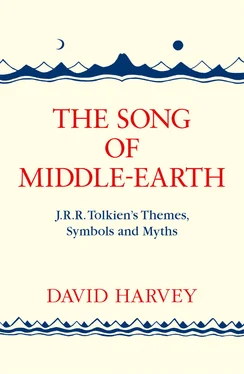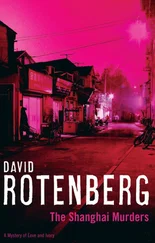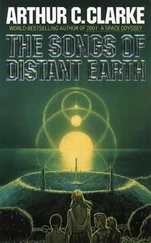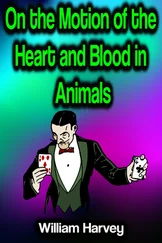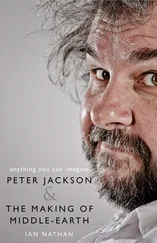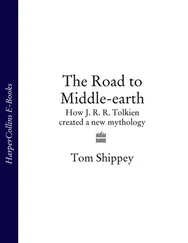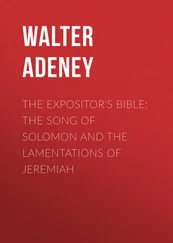In the void the Theme of Ilúvatar and the Music of the Ainur became a vision in which ‘they saw a new World made visible before them, and it was globed amid the Void’. 7This was a vision of a World that would be, but at that stage of its development remained in the spirit of creative fire. Although the Ainur have the power to make and shape, only Ilúvatar can give them the materials and realise the Creation.
They shared in its ‘making’ – but only on the same terms as we ‘make’ a work of art or story. The realization of it, the gift to it of a created reality of the same grade as their own, was the act of the One God. 8
The realisation in its most absolute sense takes place when Ilúvatar transforms the vision into a reality.
Eä! Let these things Be! And I will send forth into the Void the Flame Imperishable, and it shall be at the heart of the World, and the World shall Be. 9
Eä is the World that Is. It is a reality and not an abstract vision. It was seen by the Ainur as a fact and ‘as they looked and wondered this World began to unfold its history, and it seemed to them that it lived and grew’. 10
The importance of the Flame Imperishable, the Secret Fire which is sent to the Heart of the World, is that creation carries with it the essential essence of creativity. It is the symbol of that categorical imperative, that transformation of a work of art or creation from a vision to an actual reality. 11
At this point in the creation cycle, Ilúvatar’s function fades and the Valar assume more importance. But who or what are the Valar? Why are they so important? The Ainur were the spirits created by Ilúvatar. They were at one with the Creator and with the Music of Ilúvatar. Some of these Ainur later became the Valar and others remained as Ainur in a spiritual or disembodied form. The Valar were those Ainur who descended to Eä and walked upon it in a physical form. They looked like the Children of Ilúvatar – the Elves – whom they had seen in the Vision of Ilúvatar. There were fourteen great Ainur who became Valar – seven male and seven female. There were others also, but they were of a lesser degree, and these were the Maiar, who were the servants of the Valar. The difficulties that some readers may have experienced in understanding these various powerful beings lies in the fact that Tolkien did not say how many Ainur there were in the first place, nor does he tell us how many Maiar came to Eä. We can conclude that Sauron, Olórin (Gandalf), Curumo (Saruman) and the other Istari were Maiar, as were the Valaraukar or Balrogs. 12The Balrogs were perverted by Morgoth and became the shock troops in his war of fear that he later waged in Middle-earth. It has also been suggested that Tom Bombadil was a Maia because of his power and knowledge, and what he himself says:
Eldest, that’s what I am … Tom was here before the river and the trees; Tom remembers the first raindrop and the first acorn. He made paths before the Big People, and saw the little People arriving. He was here before the Kings and the graves and the Barrow-wights. When the Elves passed westward, Tom was here already, before the seas were bent. He knew the dark under the stars when it was fearless – before the Dark Lord came from the Outside. 13
Elrond described him as ‘older than the old’, ‘oldest and fatherless’ and ‘Last as he was First’. 14
The Valar were demi-god, Titan-like beings. They were charged with the fulfilment of the Vision and the completion of Arda (the Earth). They each had individual knowledge of portions of the Vision, but of all the Valar, only Manwë understood most clearly the Will of Ilúvatar. Manwë’s special province was the air, wind and clouds. His companion was Varda (or Elbereth Gilthoniel), the Lady of the Stars. Ulmo was the Lord of the Waters, the Poseidon of Arda. Aulë the Smith is Hephaestos or Vulcan, dealing with matters of the Earth, stone and jewels. His companion is Yavanna, the Earth Mother – Demeter or Ceres. Mandos is the Keeper of the Houses of the Dead, forgets nothing and knows all things that shall be. He pronounces his dooms and judgements only at the bidding of Manwë. He is inflexible and dispassionate and is rather like a recording device. He knows what is going to happen, but unlike Manwë, he does not understand the significance or relevance of it in the greater plan of Ilúvatar. For that reason he can only reveal his knowledge when Manwë lets him. Nienna the Weeper represents pity and suffering, but not despair. Those who hear her learn pity and endurance in hope. She brings strength to the spirit and turns sorrow to wisdom. Oromë is the Huntsman of the Valar, and the only Vala to have come to Middle-earth. He is Lord of animals and beasts. These eight are the Aratar or the Holy Ones of Arda. ‘In majesty they are peers, surpassing beyond compare all others.’ 15
Конец ознакомительного фрагмента.
Текст предоставлен ООО «ЛитРес».
Прочитайте эту книгу целиком, купив полную легальную версию на ЛитРес.
Безопасно оплатить книгу можно банковской картой Visa, MasterCard, Maestro, со счета мобильного телефона, с платежного терминала, в салоне МТС или Связной, через PayPal, WebMoney, Яндекс.Деньги, QIWI Кошелек, бонусными картами или другим удобным Вам способом.
